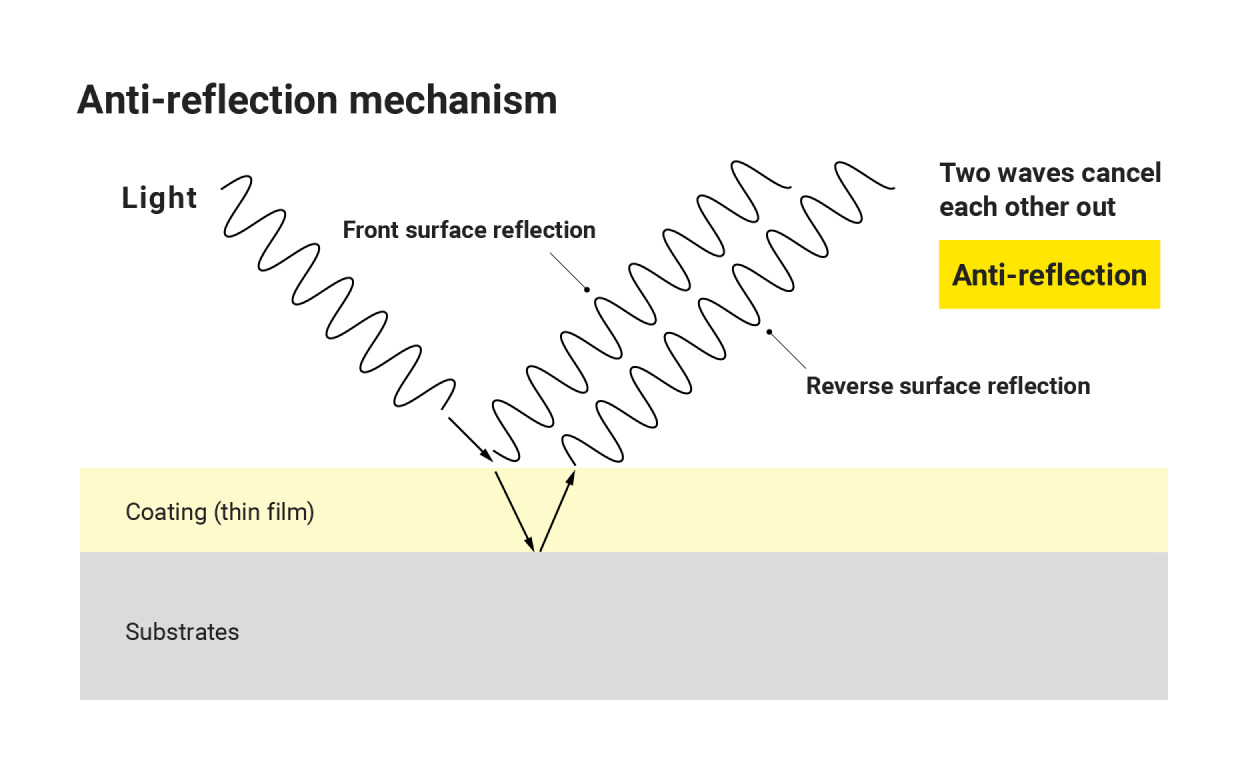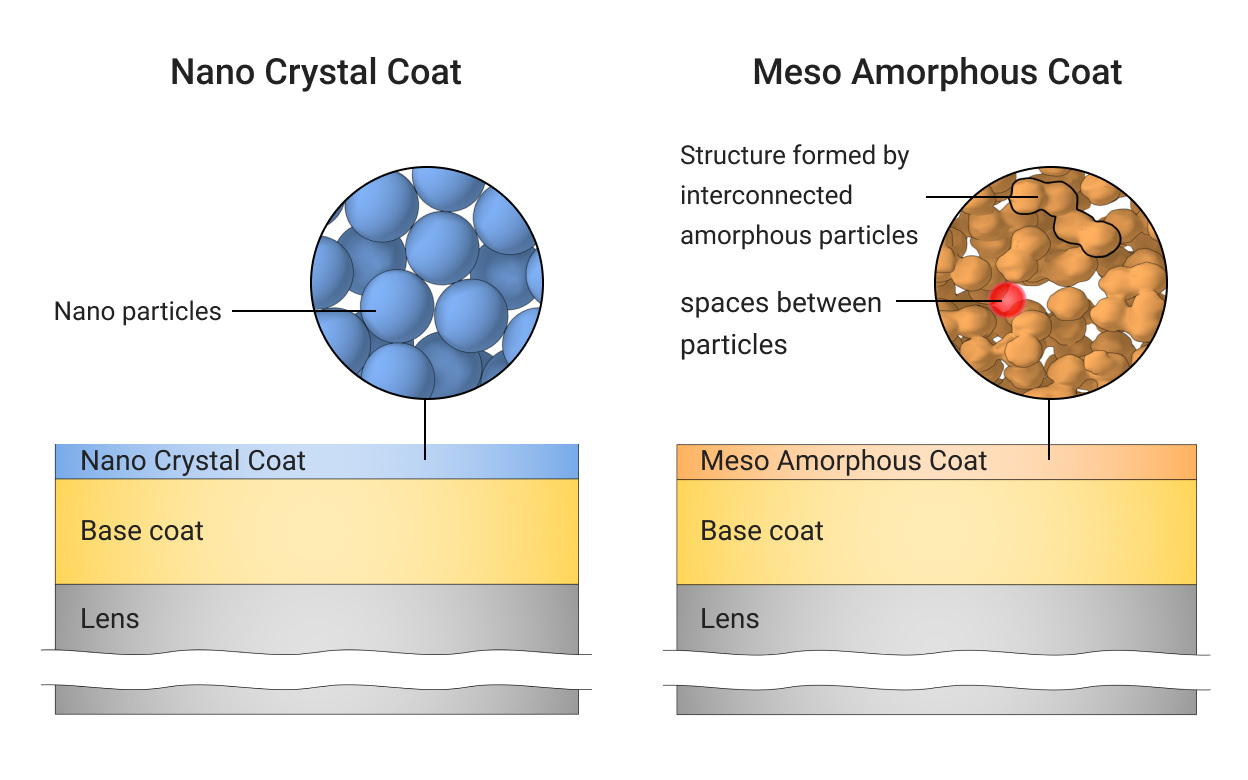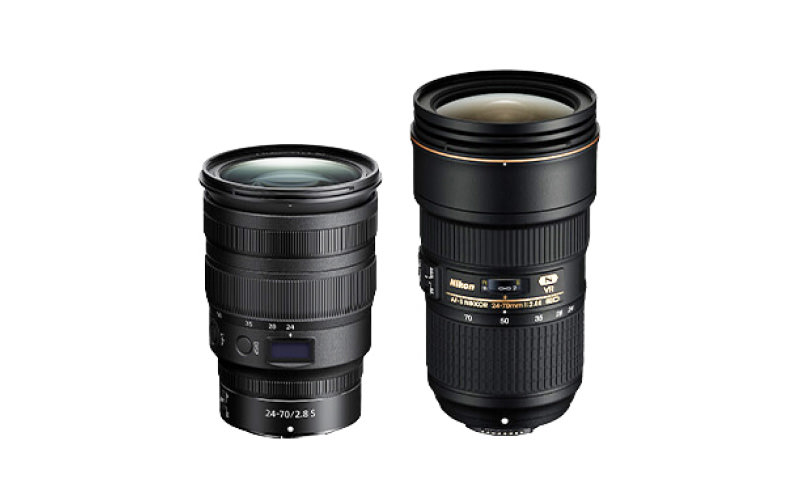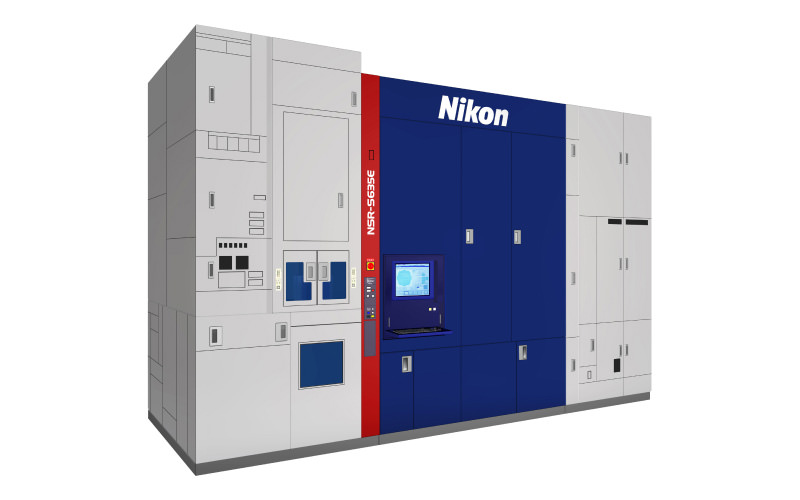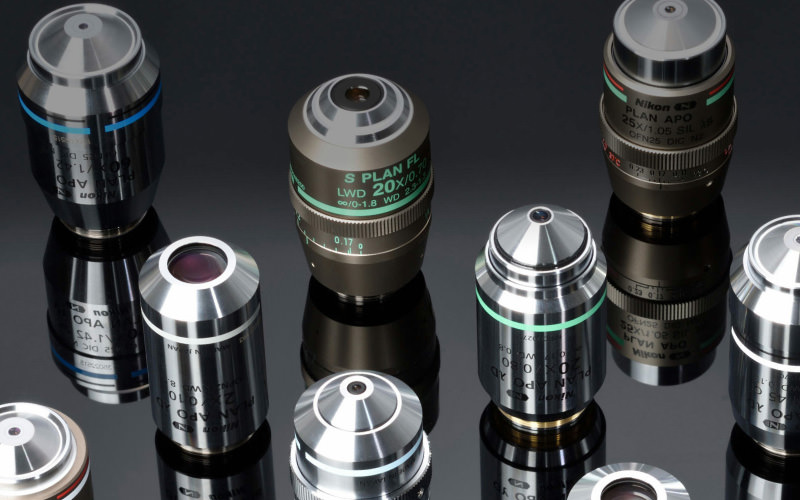Anti-Reflective Coatings
Technology Overview
Anti-reflective coatings reduce surface reflections to make light easier to see. For example, in glasses, they reduce inner reflections to make your field of vision clearer. In optical systems that use many lenses, such as camera lenses, microscope objectives, and projection lenses, it is possible to minimize light reflection and increase the contrast of images. In addition, light reflected at the lens interface can be multiply reflected on each surface of the lens elements, causing ghosts and flares. This coating also helps to reduce these effects.
When light passes through the boundary between materials with different refractive indices, some light is reflected, while the rest passes through. Anti-reflective coatings design the refractive index and thickness of the material used in the film to reduce the reflection of light at specific wavelengths by utilizing light interference phenomena. Reflection occurs due to the difference in refractive index at the boundary between materials, so there are methods to suppress reflection at the boundary between the air and the lens, for example, by forming a nanoparticle film with a refractive index close to that of air. When dealing with visible light wavelength bands, such as in cameras, we design multilayer films made of materials with different refractive indices to prevent reflection at each wavelength.
There are various methods for film formation, and the most suitable method is determined depending on the required accuracy, desired film function, and material.
Click to enlarge
Nikon offers a wide range of optical instruments, each with different levels of reflection suppression and compatible wavelength bands. Although the projection lens for semiconductor lithography systems is tailored to a narrow wavelength band, it is necessary to suppress the effects of reflection on the many lens surfaces with the utmost precision. Camera lenses are required to reduce reflection over a wide wavelength band. The film deposition process in production requires precision to meet product specifications and must also be adapted for mass production.
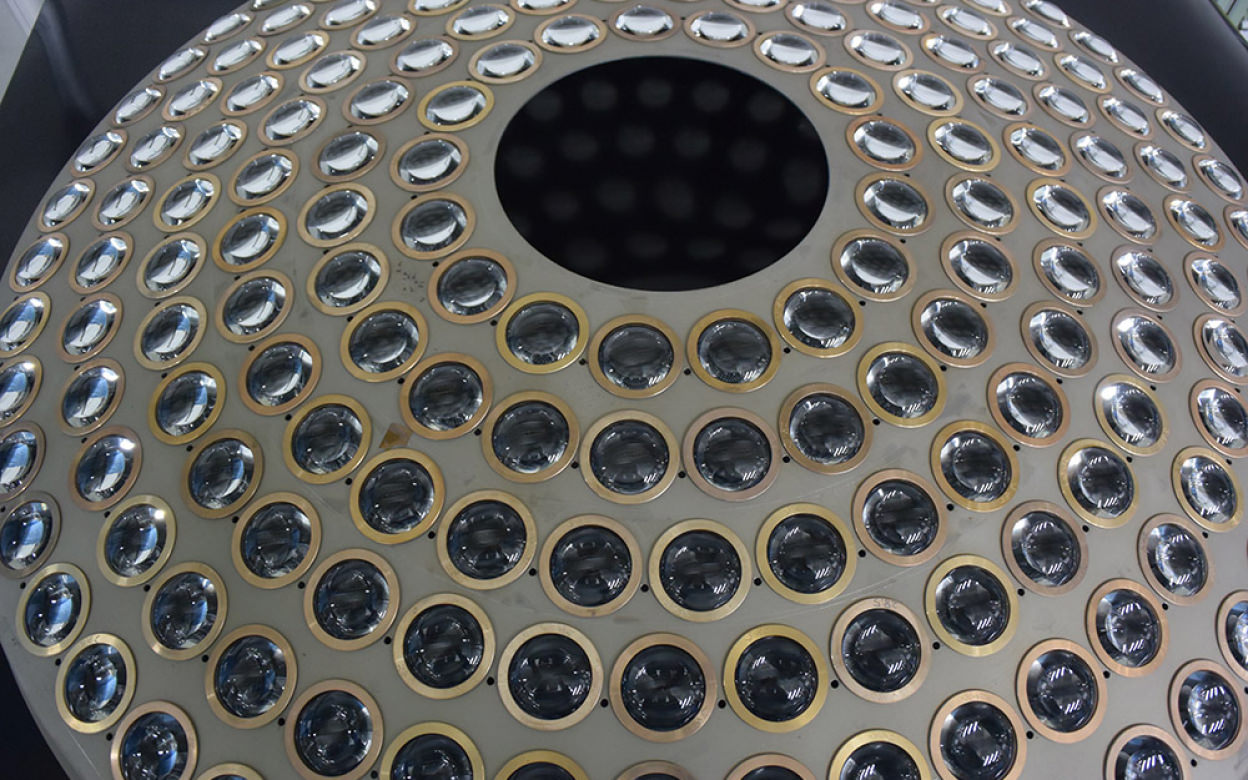
Technology Application Examples
Interchangeable Camera Lenses
The new coating, “Meso Amorphous Coat,” has an anti-reflection effect that surpasses Nano Crystal Coat and significantly reduces ghosting and flare caused by incident light from any direction, including diagonal and vertical entry. The synergistic effect with “ARNEO Coat,” which has a high anti-reflection effect against vertically incident light, allows for crisp, clear images even when backlit.
By depositing bulky structures in which amorphous particles smaller than the particles of Nano Crystal Coat are linked together, mesoscale* gaps between particles are formed throughout the film. This makes it possible to achieve both low refractive index and low scattering, which cannot be achieved with Nano Crystal Coat.
- *Mesoscale: the scale between micro and macro. Here, it is on the order of a few nanometers.
Click to enlarge
Technologies related to these examples
Related Technology
Coating and Surface Treatment
Coatings and surface treatments protect parts from exterior factors, such as rust and corrosion, and add properties to the surface such as wear resistance, sliding properties, water repellency, and non-adhesion. Characteristics such as desired optical properties, electrical properties, and thermal conductivity can also be achieved. In addition to functionality, there are coatings and surface treatments for aesthetic purposes. Optical properties include not only anti-reflection, but also high-reflection coatings on mirrors, wavelength selection filters, and polarizing filters, allowing control of light reflection, transmission, absorption, and interference.
Nikon develops various deposition methods for optical thin films to enhance optical properties across a wide range of optical systems. We apply suitable methods depending on the application, including dry methods such as vapor deposition and sputtering, and wet methods like spin coating and dip coating.
The immersion technology used in semiconductor lithography systems requires water-repellent films, anti-fouling films around the stage, and films that improve sliding properties. Films are also necessary for the exterior of cameras and other devices.
The mist deposition method was developed as a method for depositing films on film substrates, which is necessary in the manufacturing of long and large flexible devices. Since the film is deposited at atmospheric pressure, it has a lower environmental impact and higher productivity than dry film deposition using a vacuum. It is expected to be applied to a variety of applications in the future.
Main Related Products
You can search for articles related to Nikon’s technology, research and development by tag.

